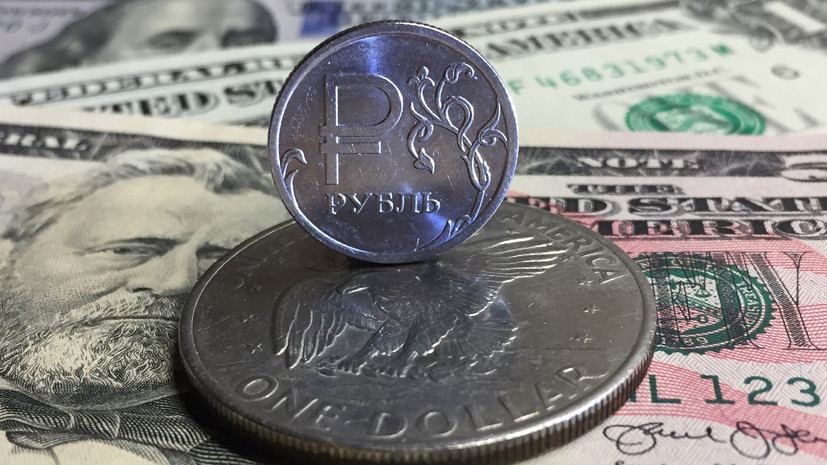On Tuesday, June 30, the Russian currency shows a weakening on the Moscow Exchange. In the middle of the day, the dollar rose by 1.9% and for the first time since May 27 reached 71.3 rubles. At the same time, the euro has updated the maximum since May 14 and in the moment it rose by 1.6% - up to 79.9 rubles.
The official exchange rate of the Central Bank as of July 1 is set at 70.44 rubles per dollar and 78.99 rubles per euro.
Negative dynamics are also shown in the Russian stock market. During the bidding, the Mosbirzhi index fell by 0.4% to 2755 points, and the RTS index - by 1.7%, to 1218 points.
The depreciation of the national currency and Russian securities is taking place against the backdrop of a moderate decline in world oil prices. On Tuesday, on the ICE exchange in London, the raw materials of the Brent benchmark fell 1.7% to $ 41 per barrel. In addition, pressure on the ruble is exerted by news about the spread of coronavirus in the world. This point of view in an interview with RT was expressed by the analyst of FINAM Group Alexei Korenev.
According to Johns Hopkins University, since the beginning of summer, the number of patients with coronavirus infection COVID-19 in the world has grown by more than 4 million and currently exceeds 10.4 million. Against this background, the International Monetary Fund in its latest report worsened the forecast for a decline in the global economy. According to the organization’s estimates, in 2020 the volume of world GDP may decrease by 5.9%. Earlier, IMF specialists expected a decrease of 3%.
“Investors fear the second wave of coronavirus. A new outbreak of disease could lead to the re-introduction of quarantine measures in the world, which could significantly affect those companies and industries that were able to survive the first wave. As a result, investors are actively withdrawing funds from risky currencies and securities, investing in protective assets, such as gold. This state of affairs leads to the weakening of the ruble, ”Korenev explained.
Meanwhile, the actions of the central banks of the USA and Europe play in favor of the Russian currency. This was in an interview with RT told the expert on the stock market “BCS Broker” Konstantin Karpov.
In late March, the United States Federal Reserve announced an unprecedented expansion of its quantitative easing program. The regulator began to buy bonds in the stock market in unlimited volume. Such a policy should lead to an increase in the money supply in the economy and help to increase the GDP growth rate. A similar policy was launched by the European Central Bank (ECB). However, the measures of the Fed and the ECB risk leading to some weakening of the dollar and the euro in the long run.
Moreover, according to experts, the policy of the Bank of Russia also supports the Russian currency. Recall, to stabilize the ruble since March 10, the Central Bank began proactive sale of foreign currency on the domestic market. Thus, the regulator artificially increases the demand for rubles. In total, over the past time, the volume of currency sales amounted to 915.9 billion rubles.
“The further situation in the foreign exchange market will continue to depend on the dynamics of energy prices and the actions of the Central Bank. At the same time, a certain reduction in the price of the ruble observed in recent days is beneficial to the government in terms of balancing the budget. Now, due to the consequences of the pandemic, the Russian budget has become scarce, and weakening the national currency is one of the easiest ways to reduce the deficit, ”explained Alexey Korenev.
According to Konstantin Karpov, in the near future, the dollar will continue to fluctuate near 71.3 rubles. Moreover, according to the analyst, by mid-July, depending on external factors, the rate may rise to 73-73.8 rubles. Meanwhile, an additional increase in oil prices and a possible improvement in the situation with coronavirus in the world may return the dollar to levels below 70 rubles. This point of view in an interview with RT was expressed by the head of the analytical department of AMarkets Artyom Deev.
“In the event that it is possible to stop the second wave of the pandemic, oil quotes may show growth to $ 43-45 per barrel in July. Raising stock indices and the positive dynamics of the debt market will be strengthening factors for the domestic currency. As a result, the dollar may again go to the range of 67-68 rubles, and the euro - to the level of 76-77 rubles, ”concluded Deev.

